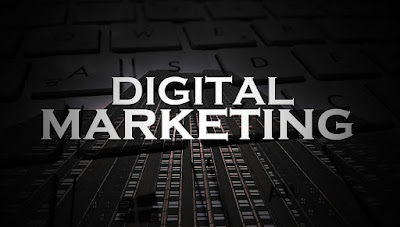How can I avoid burnout in a fast-paced digital marketing career?
Burnout is an all-too-familiar term in the fast-paced realm of digital marketing, where professionals are constantly navigating through the ever-evolving landscape of trends, algorithms, and consumer behavior. As the pressure intensifies, recognizing and addressing burnout becomes paramount for sustained success and personal well-being.
Recognizing the Signs of Burnout
The journey begins with identifying the subtle signs—persistent fatigue, irritability, and a decline in enthusiasm. Acknowledging these cues early on is crucial for effective intervention.
Burnout manifests in professional life as well, often leading to a decline in work performance and a noticeable lack of motivation. Understanding these indicators helps in formulating targeted strategies.
Understanding the Causes of Burnout
Digital marketers are often subjected to tight deadlines and an overwhelming workload. Unraveling the intricacies of workload management is essential to curbing burnout.
In a world where the digital never sleeps, establishing boundaries between work and personal life becomes a formidable challenge. Balancing these aspects is key to long-term success.
The relentless pace of change in the digital marketing domain can create a pressure cooker environment. Navigating this constant evolution without succumbing to burnout requires a strategic approach.
The Role of Perplexity in Burnout
Perplexity, characterized by overwhelming and complex tasks, is a silent contributor to burnout. Understanding its role is crucial in devising effective coping mechanisms.
Burstiness, or sudden spikes in workload, adds another layer to the digital marketer's challenge. Strategies for managing burstiness and maintaining equilibrium are indispensable.
Prioritizing Self-Care in a Digital Marketing Career
Establishing clear boundaries between work and personal life is a foundational step in preventing burnout. This involves saying no when necessary and prioritizing self-care.
Taking breaks is not a sign of weakness but a strategic move towards longevity. Whether it's a short walk or a rejuvenating vacation, these pauses are vital for sustained creativity and resilience.
Effective Time Management Techniques
Digital marketers can benefit from leveraging project management tools to streamline tasks, set deadlines, and enhance overall efficiency.
Implementing time-blocking strategies allows for dedicated focus on specific tasks, preventing burnout caused by multitasking and constant context switching.
Building a Support System
A workplace that values mental health and fosters a supportive culture significantly reduces the risk of burnout. Nurturing such an environment is a collective responsibility.
Connecting with peers who understand the challenges of the digital marketing landscape provides a valuable support system. Shared experiences and insights contribute to resilience.
Continuous Learning vs. Overwhelm
The quest for staying updated should not morph into information overload. Striking a balance between continuous learning and avoiding overwhelm is key to a sustainable digital marketing career.
Adopting strategic learning approaches involves prioritizing relevant information, setting learning goals, and avoiding the trap of consuming excessive, non-essential content.
Flexibility and Adaptability in Digital Marketing
Change is the only constant in digital marketing. Developing a mindset that embraces change while managing the associated stress is vital for career longevity.
Being adaptable in a dynamic industry ensures resilience. An ability to pivot when necessary and evolve with the digital landscape is a powerful tool against burnout.
Mental Health Awareness in the Workplace
Encouraging open conversations helps to dismantle the negative perception associated with mental health. Fostering an environment where team members feel comfortable discussing mental well-being is a proactive step.
Seeking professional help should be viewed as a strength rather than a weakness. Destigmatizing therapy and counseling contributes to a healthier work culture.
Employee Assistance Programs (EAPs)
Employee Assistance Programs are valuable resources that offer counseling and support services. Employers can play a pivotal role in promoting EAPs to mitigate burnout.
From confidential counseling to stress management workshops, EAPs provide comprehensive support, reinforcing the importance of mental well-being in the workplace.
The Role of Leadership in Mitigating Burnout
Leadership plays a crucial role in creating a work environment that prioritizes employee well-being. Leading by example, setting realistic expectations, and fostering work-life balance are essential.
Leaders who prioritize their well-being set a precedent for the entire team. Demonstrating a healthy work-life balance contributes to a positive and productive workplace.
Striking a Balance: Personal and Professional Growth
Success in a digital marketing career is not synonymous with burnout. Striking a balance between achieving career goals and safeguarding well-being is the key to long-term success.
Understanding personal limitations and setting realistic expectations ensures sustainable growth. Celebrating achievements, no matter how small, is an integral part of this process.
Conclusion
In the dynamic world of digital marketing, avoiding burnout requires a multifaceted approach. Recognizing early signs, understanding the causes, and implementing strategies like effective time management, self-care, and building a support system are critical steps. Embracing adaptability, promoting mental health awareness, and recognizing the role of leadership contribute to a resilient and thriving digital marketing career.
. Burnout is prevalent in the digital marketing industry due to high workloads, tight deadlines, and the constant need to stay updated with industry trends.
. Prioritize relevant information, set learning goals, and avoid consuming excessive, non-essential content to maintain a healthy balance.
. EAPs provide valuable counseling and support services, contributing to the overall mental well-being of employees and preventing burnout.
. Leaders can lead by example, set realistic expectations, and foster a work environment that prioritizes employee well-being.
. Yes, seeking professional help for mental health is viewed as a strength, and workplaces should actively destigmatize therapy and counseling.



.jpeg)










